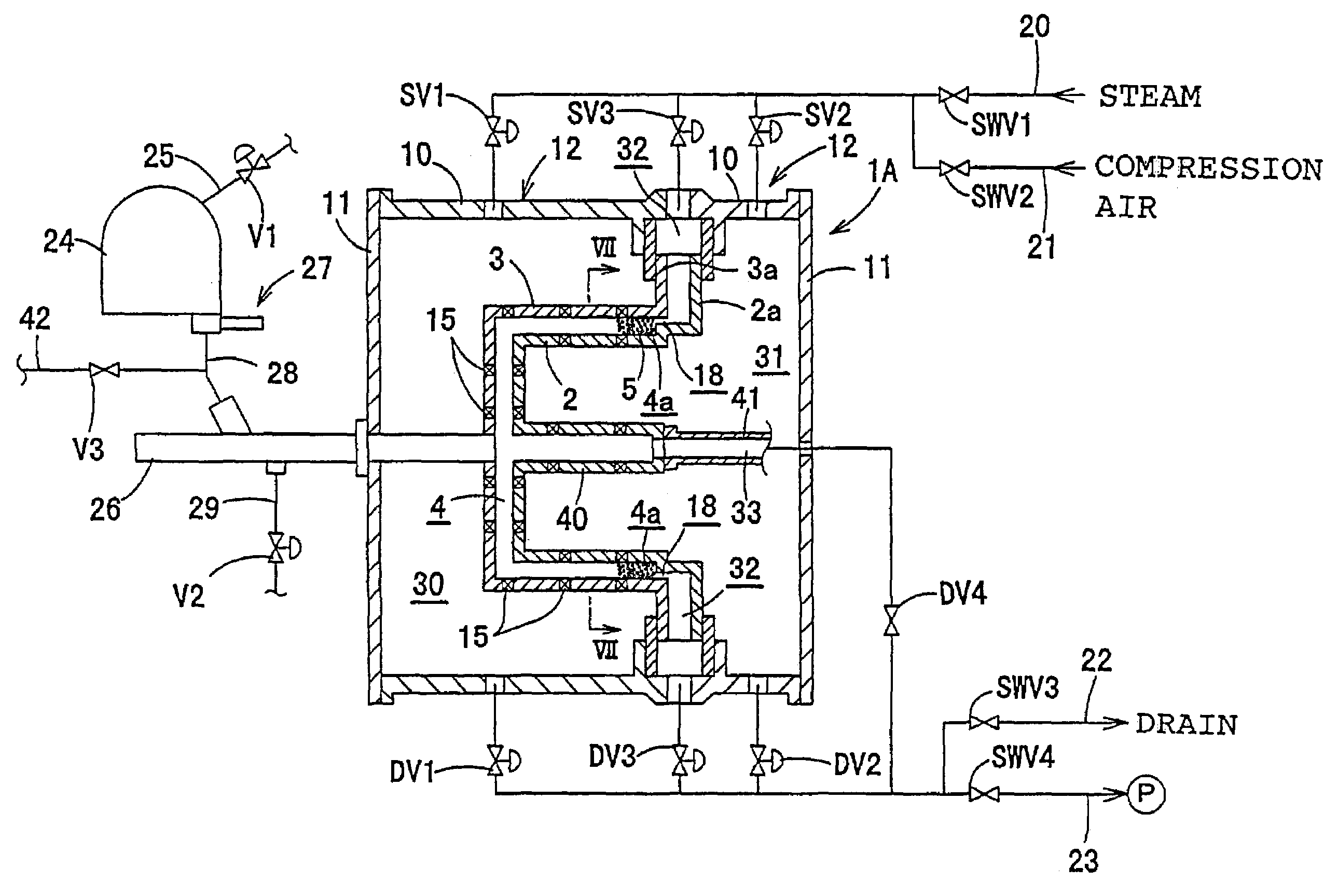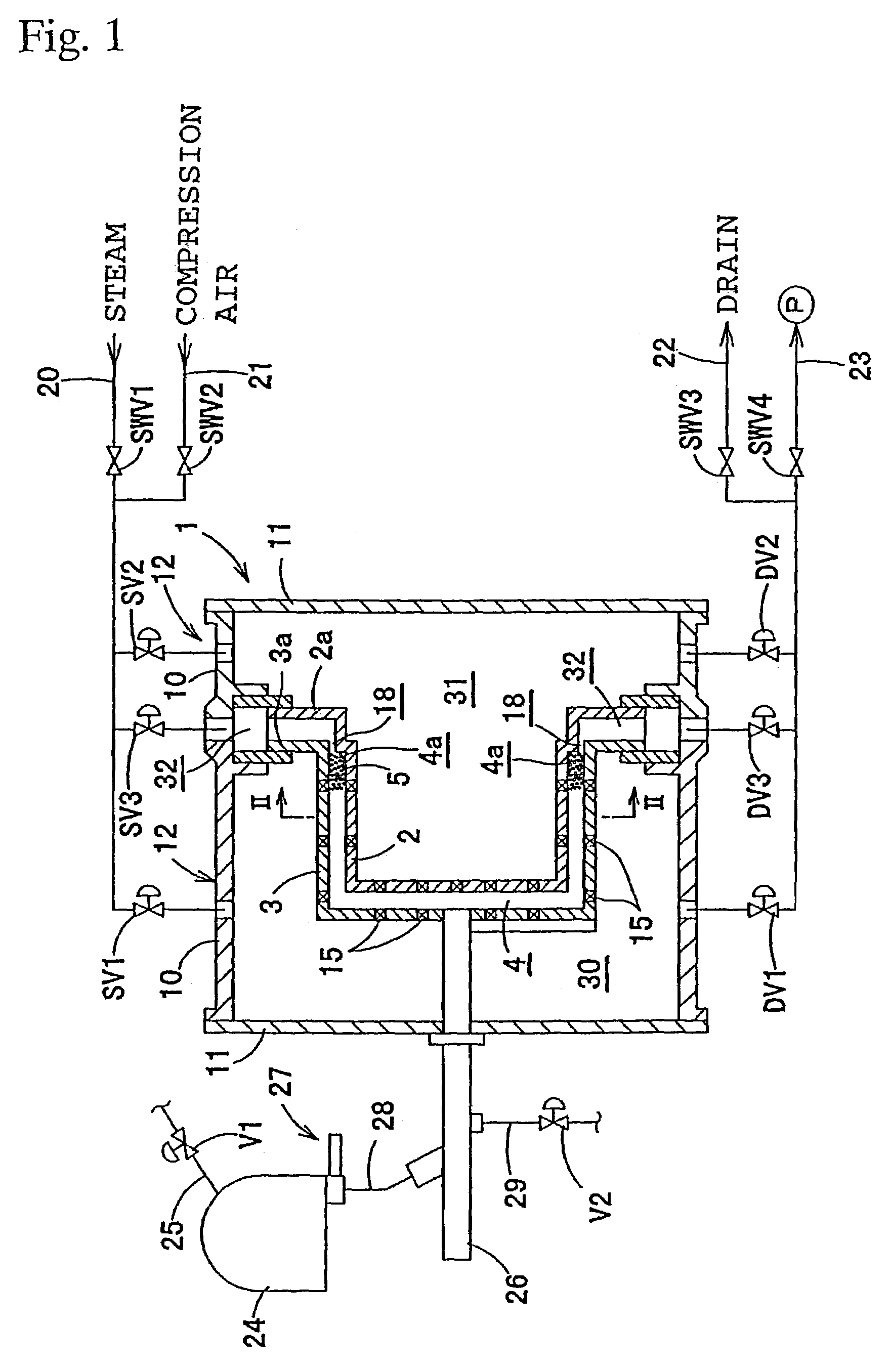Die-expanded molding apparatus and method for synthetic resin, and die-expanded molded foam obtained thereby
a technology of die-expanded molding and die-expanded foam, which is applied in the direction of woodworking apparatus, transportation and packaging, and other domestic objects, which can solve the problems of failure to mold, large difference between the packing density of starting material beads at specific locations in the cavity 104 and the packing density at other locations, and extremely uneven packing. , to achieve the effect of preventing local increases in packing density, and preventing defects in the return flow
- Summary
- Abstract
- Description
- Claims
- Application Information
AI Technical Summary
Benefits of technology
Problems solved by technology
Method used
Image
Examples
first embodiment
[0164]A feature of the first embodiment is that natural blow back begins when the cavity 4 is filled with the starting material beads 5 thus delivered, such as the state shown in FIG. 12(b), but that blow back is carried out at this time by controlling the pressure in the chamber 30 and 31 to between 0.8 and 1.5 kg / cm2, for example, so that the pressure in the cavity 4 is maintained at a positive pressure as the pressure in the starting material tank 24 is maintained, specifically, is maintained at 1.0 kg / cm2.
second embodiment
[0165]The second embodiment is characterized in that, when natural blow black begins, blow back is carried out by controlling the pressure in the starting material tank 24 to a pressure equivalent to the pressure in the cavity 4, at 0.8 kg / cm2, for example, or to a negative pressure, while maintaining the pressure in the cavity 4, in other words, maintaining the pressure at 0.8 kg / cm2. In this case, the pressure in the starting material tank 24 should be adjusted to between 0.8 and 0.3 kg / cm2.
[0166]The maximum pressure differential of the pressure in the starting material tank 24 relative to the pressure in the cavity 4 must be 0.5 kg / cm2, as indicated in the first and second embodiments.
[0167]In this packing step, natural blow back is carried out under such pressure conditions, the plunger shaft 64 in the plunger 61 is then pushed out in the same manner as in the past, and the starting material bead supply hole 62 of the cavity 4 should be closed off by the plunger tip 65. The expa...
PUM
| Property | Measurement | Unit |
|---|---|---|
| diameter | aaaaa | aaaaa |
| diameter | aaaaa | aaaaa |
| thickness | aaaaa | aaaaa |
Abstract
Description
Claims
Application Information
 Login to View More
Login to View More - R&D
- Intellectual Property
- Life Sciences
- Materials
- Tech Scout
- Unparalleled Data Quality
- Higher Quality Content
- 60% Fewer Hallucinations
Browse by: Latest US Patents, China's latest patents, Technical Efficacy Thesaurus, Application Domain, Technology Topic, Popular Technical Reports.
© 2025 PatSnap. All rights reserved.Legal|Privacy policy|Modern Slavery Act Transparency Statement|Sitemap|About US| Contact US: help@patsnap.com



